Recent Articles
Popular Makes
Body Types
10 Best Compact Hatchbacks
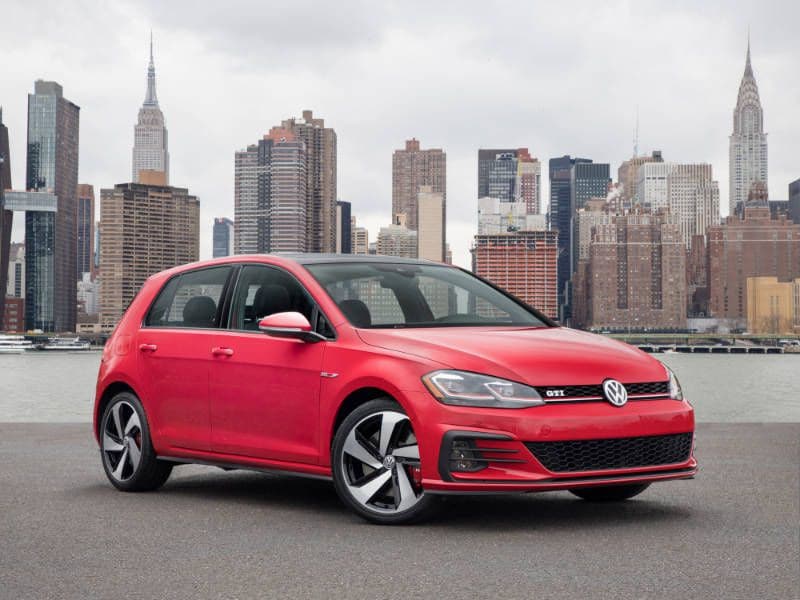
2018 Volkswagen Golf GTI ・ Photo by Volkswagen
Congratulations, you’re checking out the 10 best compact hatchbacks. Feels good to be among the smart people who really “get it,” doesn’t it? Sure, sedans and crossovers have their places, but nothing else gets the job done quite like a compact hatchback. They’re accessibly priced, easy to park and maneuver, can take four people when necessary, or swallow a heck of a lot of cargo. Trips to Ikea and Home Depot are a breeze.
Since the majority are front-wheel-drive, they handle safely and predictably. Fuel economy is generally great, while some choices have a definite sporty quality. And, there are several stylish examples capable of making that all-important personal statement. Let’s taste the cream of compact hatchbacks.
2018 Chevrolet Cruze Hatchback
Do not underestimate the Chevy Cruze Hatchback, even if might seem an unlikely car to come from a company more famous for its trucks and sports machines. The ride quality is refined and composed, finding an ideal driving position is easy, and Chevy even offers a diesel version that’s super-quiet and manages 48 mpg on the highway — making it suitable for long-distance commutes.
The Cruze Hatchback also helps out during the usual everyday running around, with a useful 47.2 cubic feet of maximum luggage capacity. And, Chevy/GM’s OnStar emergency/concierge service with wi-fi is standard throughout the range. We’d recommend the mid-to-high LT trim because of the equipment levels and eligibility for options.
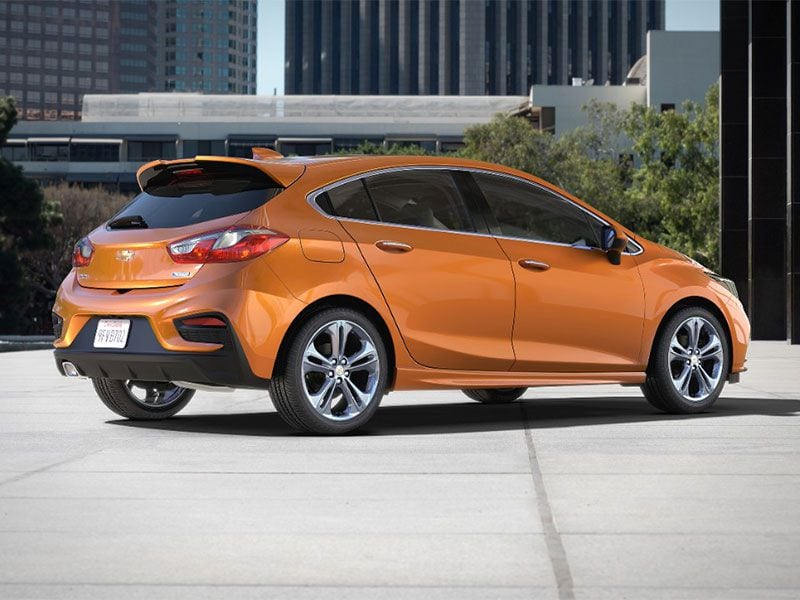
Photo by General Motors
2018 Ford Focus
Get it while you can. There’s a new generation due for 2019, but at the time of writing this article, Ford’s plans for the Focus are not set. There might just be one version given a crossover/SUV treatment. So now would be the time to buy one of the 10 best compact hatchbacks around, even after all these years.
The Focus has a great foundation that blends entertaining handling with a remarkably comfortable ride. The usual 2.0-liter engine gives the car an ample 160 hp. Or, there’s the super-sporty ST that wields 252 hp to really exploit the dynamic talents baked into this chassis. Ford is generous with standard equipment as well, such as alloy wheels and satellite radio.
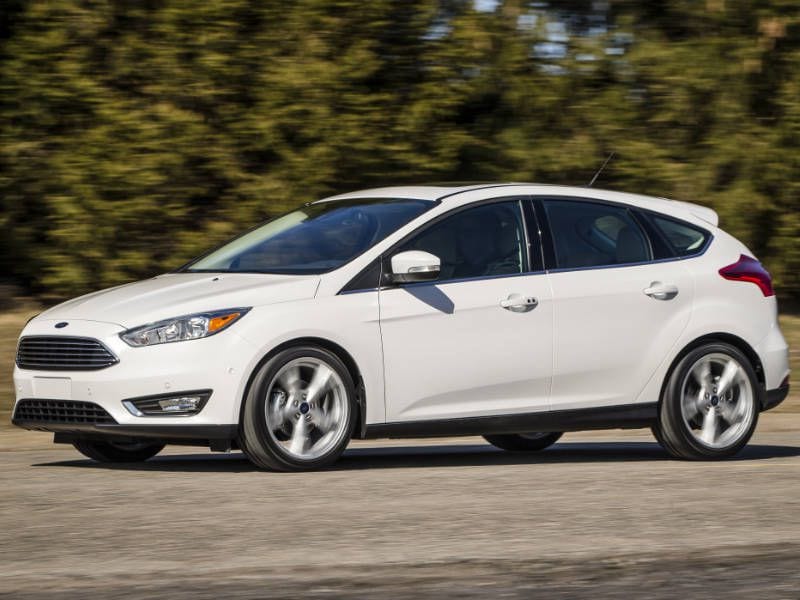
Photo by Ford
2018 Honda Civic
The Honda Civic is one of the best-selling cars in the United States, thanks to being capable in many ways. Admittedly, it might be hard to tell the difference between sedan and hatchback versions — the exterior design is busier than Santa’s elves during the run-up to Christmas — but this 10th-generation Civic is great to be inside.
Passenger space is excellent, while maximum cargo area runs to 25.7 cubic feet (rear seats up) and 46.2 cubic feet (rear seats down). The everyday version zips around with 174 hp under the hood. Anyone who wants to be more specialized and amenable to spending extra money (around $35,000) will enjoy the crazy turbocharged 306-hp Type-R. As its main name suggests, however, it’s civilized as well.
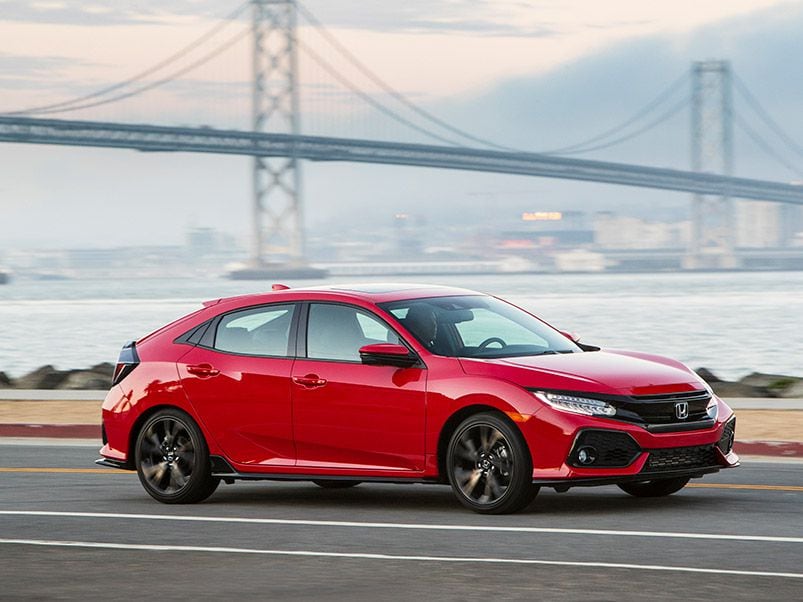
Photo by Honda
2018 Hyundai Elantra GT
Hyundai launched an all-new generation of the Elantra GT for the 2018 model year, developed primarily for Europe (home of the compact hatchback). There are basic and Sport versions, and the Sport seems like the better choice. It costs more (around $24,000, compared with $20,000 or so), but has extra power (201 hp versus 161 hp), makes better fuel consumption when automatic transmissions are in the picture (28 mpg combined against 27 mpg combined), and it’s not just a superficial makeover.
The Sport also has a more sophisticated suspension. On top of all that, the Elantra GT comes with an 8-inch infotainment display as standard, plus Apple CarPlay/Android Auto smartphone integration, and it enjoys a massive 55 cubic feet of cargo area.
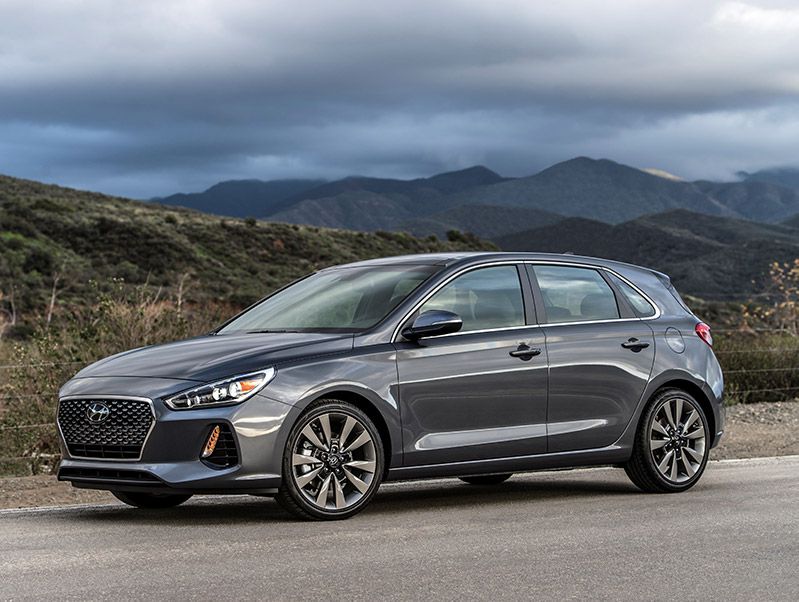
Photo by Hyundai
2018 Kia Forte5
So many Kia cars have been earning rave reviews lately that it’s easy to overlook the Forte5, the hatchback version of the Forte compact sedan. But this sibling vehicle to the Hyundai Elantra GT has its own great looks, a choice of engine outputs (164 or 201 hp), and even outdoes its Seoul sister with 56.4 cubic feet of cargo space (23.2 with the rear seats in place). The entry level LX trim (starting at around $19,000) comes with satellite radio as standard and at least offers the option of a leather-wrapped steering wheel. Things quickly become more upscale over the next two trims, while options include some advanced driver aids and ventilated front seats.
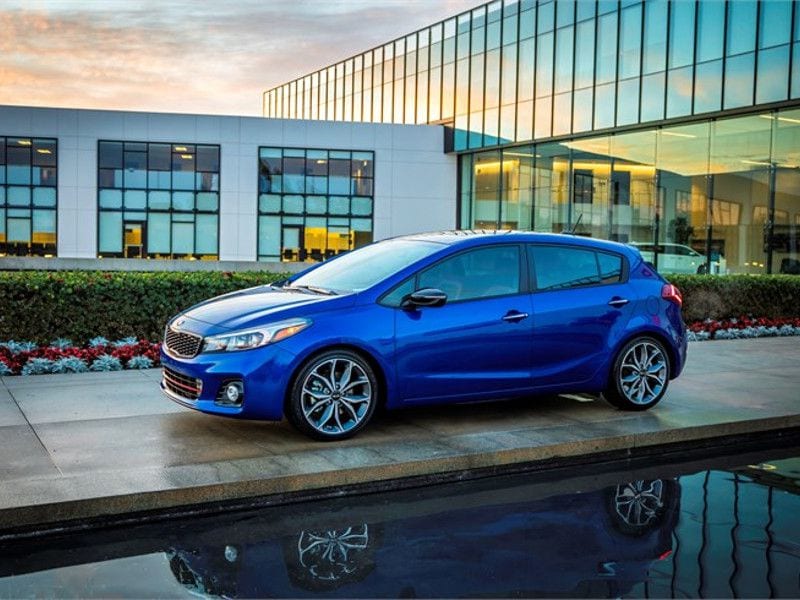
Photo by Kia
2018 Mazda3
In a list of 10 best compact hatchbacks, one car has to be at the top, and that honor belongs to the Mazda3. Not because it offers the best cargo space (it doesn’t, but 47.1 cubic feet isn’t bad), but it excels at virtually everything else. Cabin materials have a distinct premium vibe, sound insulation is similarly upscale, while the interior and exterior designs should please most people.
Fuel economy is impressive: the optional 2.5-liter engine produces 184 hp but still can return 37 mpg on the highway. Yet this also is the driver’s choice, with a sweet yet precise suspension and throttle responses that Mazda’s engineers benchmarked against the Porsche 911. It gets top safety scores, as well.
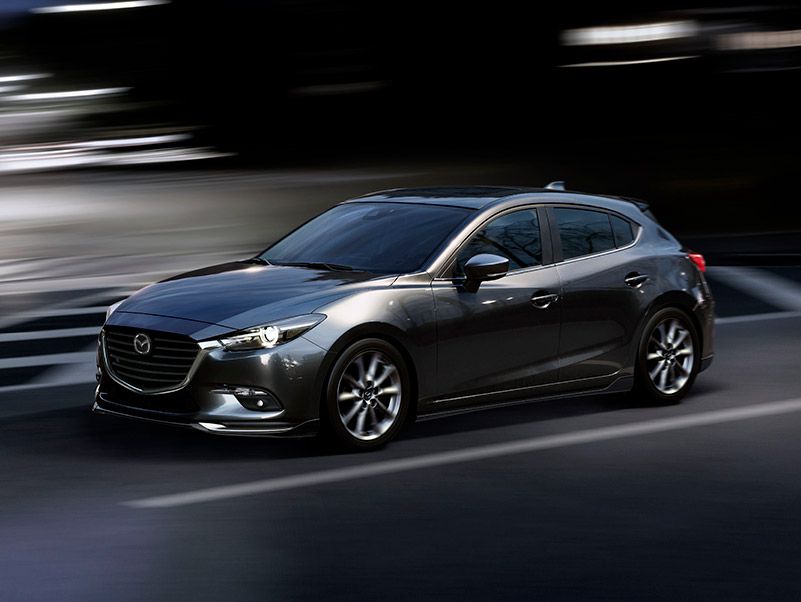
Photo by Mazda
2018 Mini Hardtop
Over in the premium arena of compact hatchbacks, the Mini reigns supreme. It brings a driving experience that’s almost hilarious and addicting (“fun” is too mild a description) with distinct style inside and out, plus a wide scope for personalization. The Hardtop also is unusual among compact hatchbacks in that it offers a two-door version as well as a four-door model. Go for the latter if cargo space is somewhat important.
We’re particularly drawn to the Cooper S variants with their 189-hp turbocharged engines. They represent useful power with a ride quality that doesn’t seem like the suspension has no springs — we exaggerate for comic effect, but the John Cooper Works models come close.
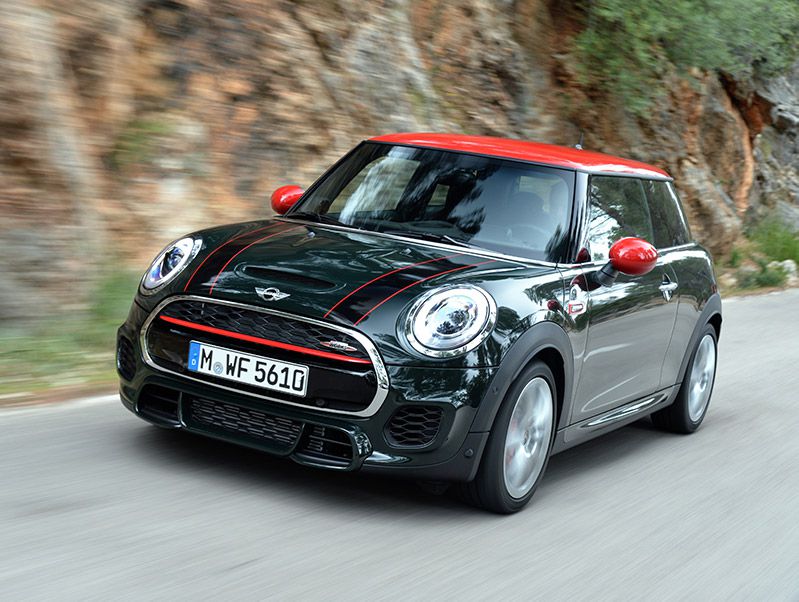
Photo by MINI
2019 Subaru Impreza
Live in an area where bad winters are the norm? All-wheel drive is standard in the Subaru Impreza, and the 2019 hatchback version starts at a fairly reasonable $20,000 (with the manual transmission). It’s spacious, with 55.3 cubic feet of cargo space when the rear seats are folded down. When they’re up, 20.8 cubic feet of luggage area also is pretty good.
Subaru cars have a well-deserved reputation for being tough. They’re also well equipped for the money. Our main gripe is that there’s only one engine available and it makes a modest 152 hp, which isn’t always enough since there’s weighty all-wheel-drive hardware aboard. Subaru resale values are typically strong, though.
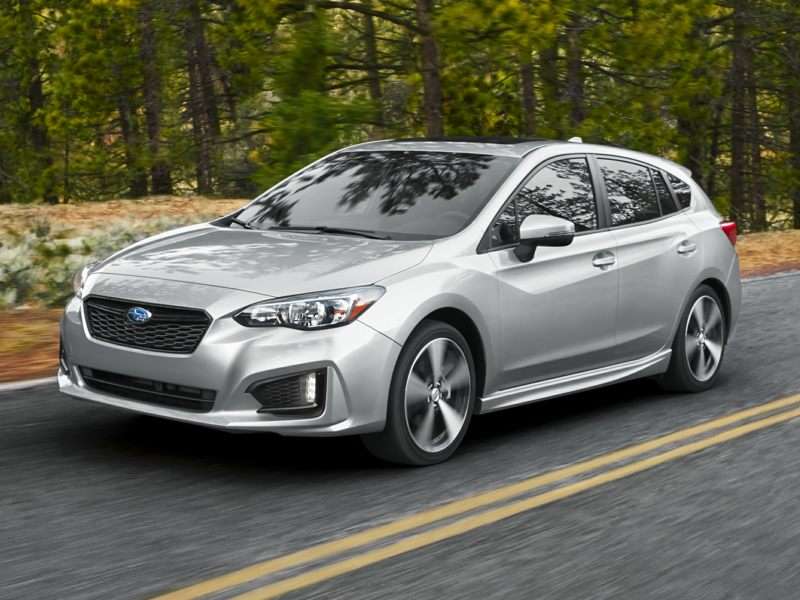
Photo by Subaru
2018 Toyota Corolla iM
Naturally, Toyota’s excellent build quality and solid reliability are present and correct, but the iM hatchback brings more to the Corolla name. That rear section offers greater practicality and versatility compared with the common compact sedan. Toyota claims luggage space of 20.8 cubic feet with the back seats up. The company doesn’t give a figure with the rear seats down, but it’s pretty roomy, with a sensible square-ish shape. Up front, there’s 137 hp from a 1.8-liter engine, giving the iM a useful amount of push. And the list of standard equipment is long, including a Pioneer sound system, leather-wrapped steering wheel and safety features like lane departure warning.
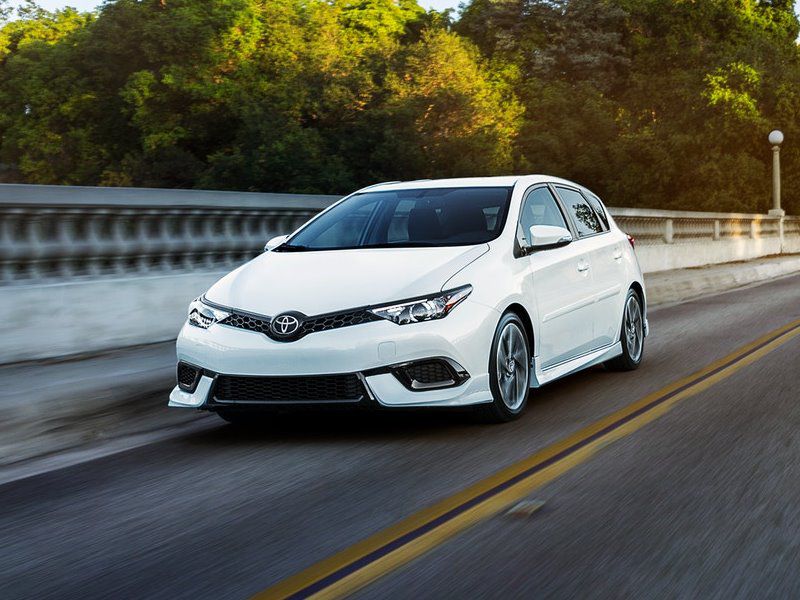
Photo by Toyota
2018 Volkswagen Golf
The Volkswagen Golf is a highlight among compact hatchbacks. For one thing, it offers a lot of cargo space: 52.7 cubic feet (16.5 with the rear seats up). Cabin materials are approaching premium grade, and so is the ride quality. The regular Golf works well enough, with plenty of occupant space and 170 hp to make decent progress. Then there’s the GTI, a 220-hp slice of automotive perfection with all the flair, function, features, poise and pace to satisfy 90 percent of the driving population. For even more hardcore enthusiasts, the all-wheel-drive Golf R packs 292 hp. It’s pretty expensive (about $41,000), but it’s equipped like a well-stocked Audi without the premium price. Honestly, we’d be completely happy with the GTI.
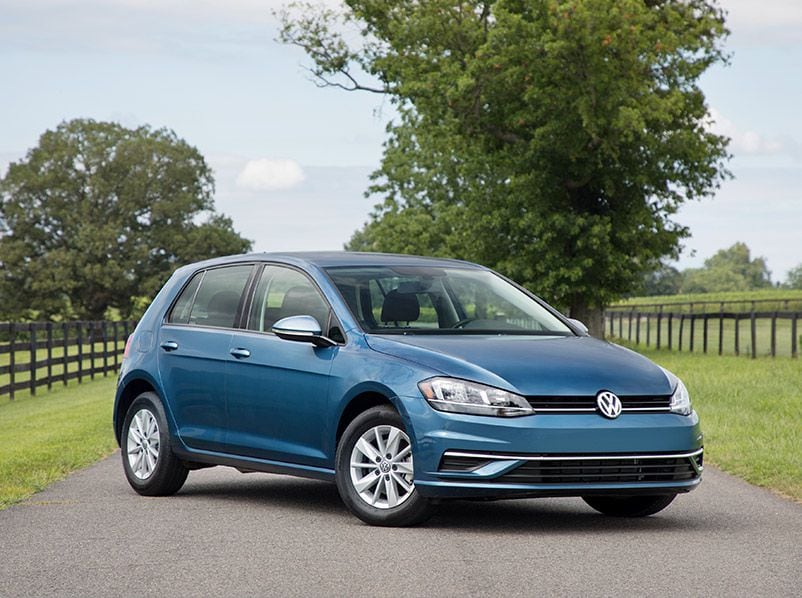
Photo by Volkswagen